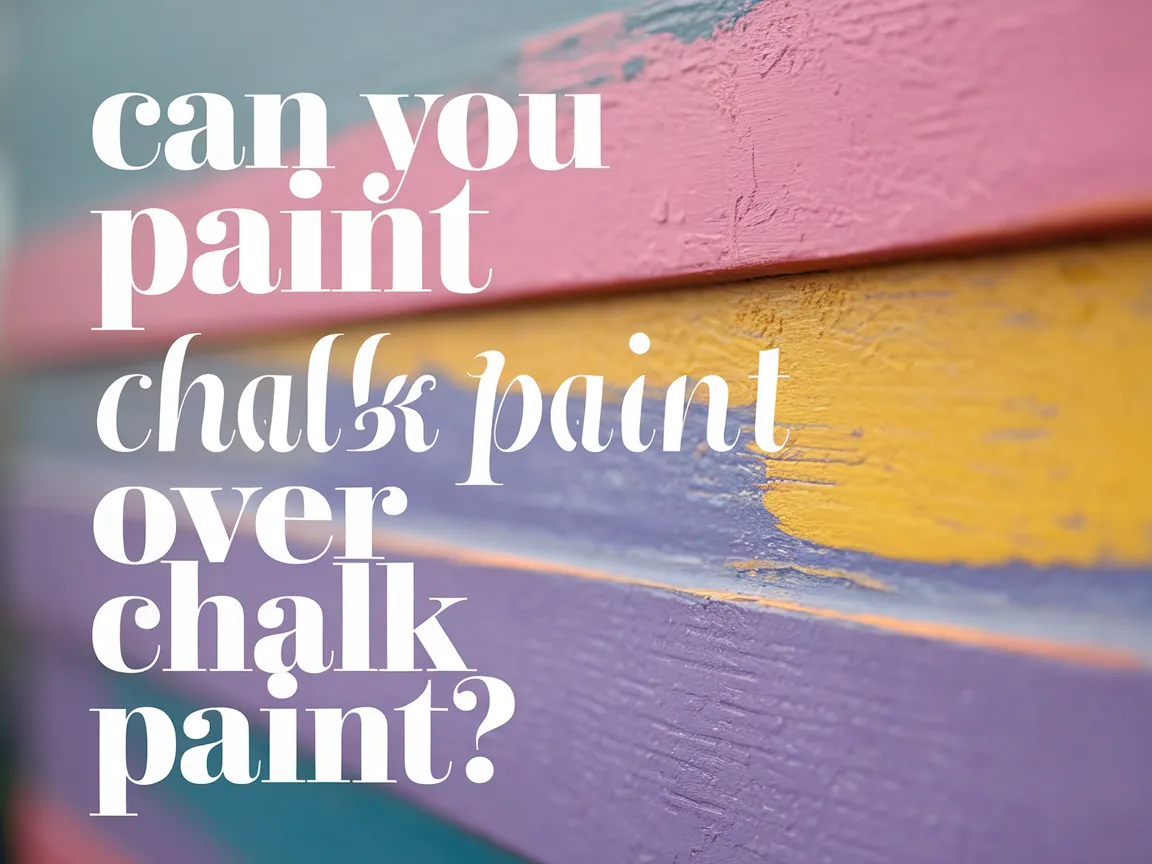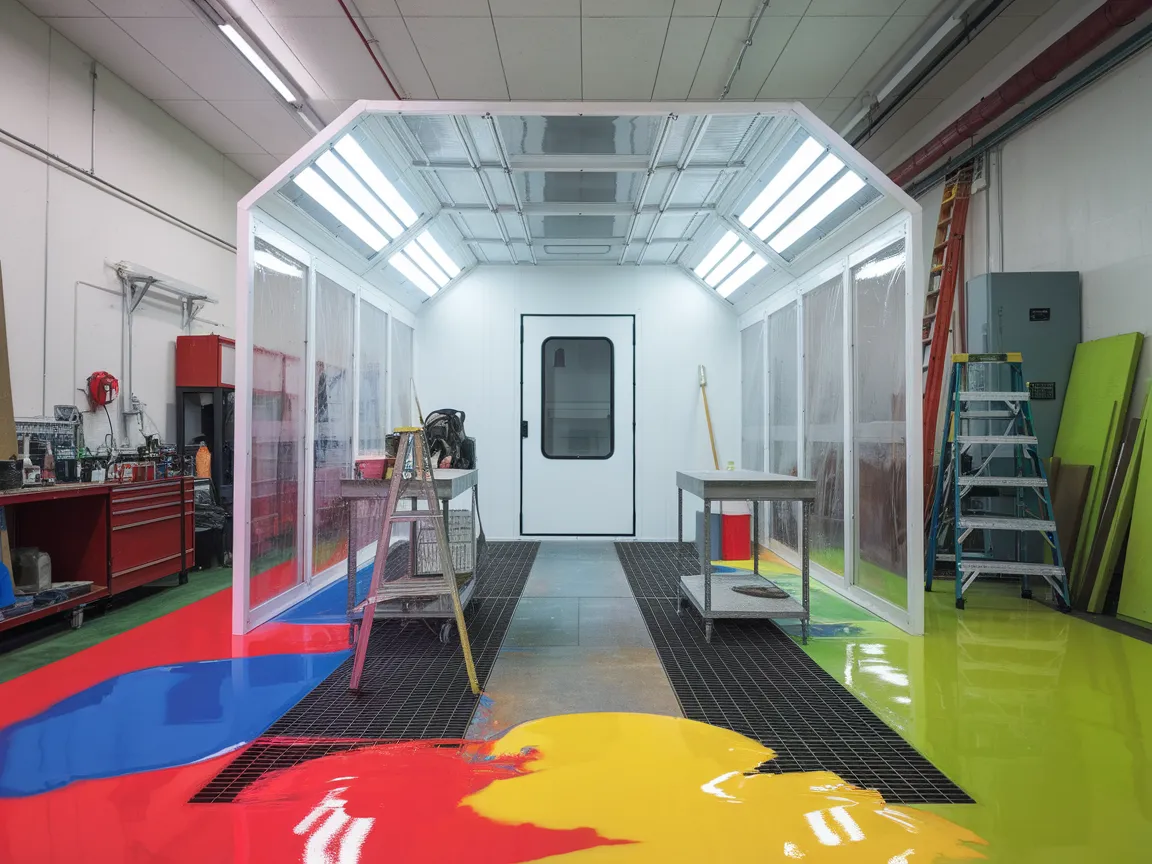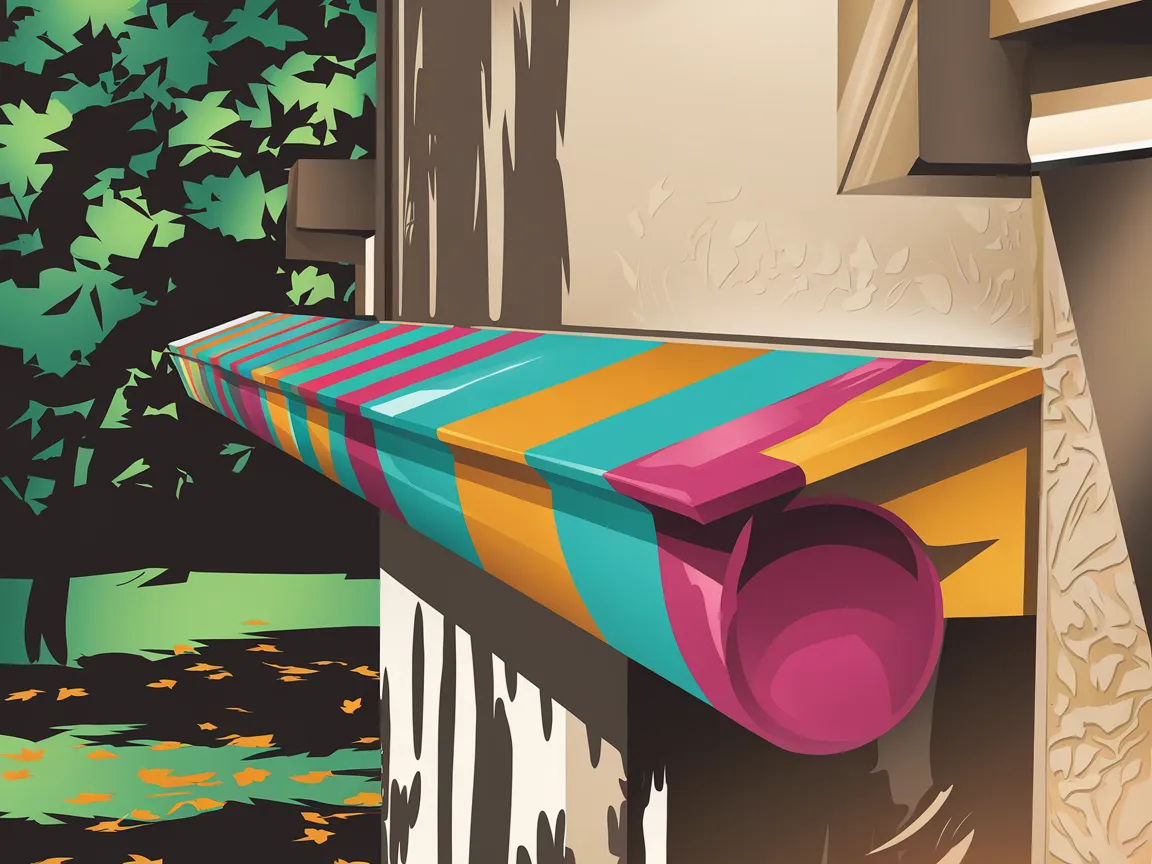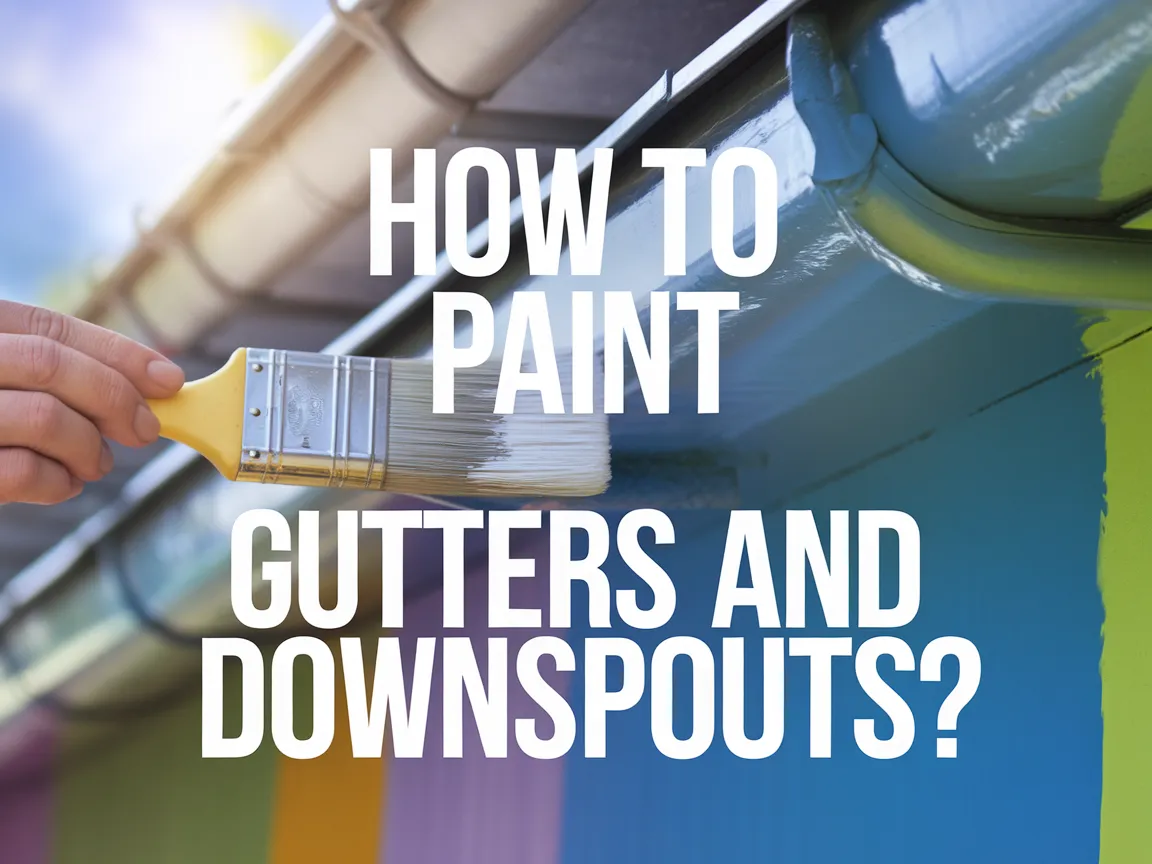Can You Paint the Inside Of Your Fireplace?
Published on: June 3, 2025 | Last Updated: January 7, 2025
Written By: Sarah McClintock
A fireplace is like a big, warm mouth that eats wood and breathes out flames. It’s where stories are told, and families gather to feel cozy and safe.
So, can you paint the inside of your fireplace interior safely? It’s important to know this because a painted fireplace can brighten your home, but safety first! I’ve learned it’s crucial to prep and choose the right materials before diving in.
In this article, you’ll discover important preparations before painting, steps for a successful job, recommended color palettes, types of suitable paint, common issues, and creative DIY project ideas for your fireplace. Whether you’re curious about how to paint tile around a fireplace or what type of paint to use on a brick fireplace, I’ve got you covered!
Contents
- 1 Can You Paint the Inside Of Your Fireplace?
- 2 What is a Fireplace?
- 3 Important Preparations Before You Start Painting
- 4 Steps to Successfully Paint the Inside Of Your Fireplace
- 5 Recommended Color Palette for a Painted Fireplace Interior
- 6 Types Of Suitable Paint for the Inside Of Your Fireplace
- 7 Factors Affecting the Decision to Paint Your Fireplace Interior
- 8 Benefits of Painting the Inside of Your Fireplace
- 9 Potential Drawbacks of Painting the Inside of Your Fireplace
- 10 Common Issues When Painting the Inside Of Your Fireplace
- 11 Alternatives to Painting Your Fireplace Interior
- 12 Maintenance Needs After Painting the Inside of Your Fireplace
- 13 Finishing Touches After Painting Your Fireplace
- 14 Frequently Asked Questions About Painting the Inside Of Your Fireplace
- 15 Conclusion
- 16 Additional Resources
Can You Paint the Inside Of Your Fireplace?
Yes, you can paint the inside of your fireplace, but use heat-resistant paint. Regular paint won’t hold up. Make sure it’s clean and dry before you start. Safety’s key, so consider ventilation while working! If you’re unsure about the painting process, check out how to paint brick surfaces for professional guidance.
What is a Fireplace?
A fireplace is an architectural structure built to contain a fire. Typically made from brick, stone, or metal, it can reach temperatures over 1,000°F (537°C) during use and vents smoke efficiently through a chimney.
From experience, I’ve wondered if you can paint the inside of your fireplace, which isn’t a small decision. Painting isn’t as simple as it seems—it requires understanding heat resistance and materials. When applying paint to such a specialized surface, you’ll want to ensure a smooth, professional finish without unsightly imperfections. preventing paint streaks effectively can make all the difference in your fireplace transformation.
Once, I researched ‘can you paint the inside of your fireplace?’ I found specific high-heat paints designed for this task, usually rated to withstand temperatures up to 1,200°F (649°C). Choosing the right color and type of paint can really transform your fireplace and change the whole vibe of your room.
Important Preparations Before You Start Painting
What do you need to paint the inside of your fireplace?
- High-Temperature Paint: Use a heat-resistant paint like Rust-Oleum High Heat or Valspar 2000 Spray Paint. It withstands temperatures up to 1093°C (2000°F) without peeling or blistering.
- Wire Brush: Get a wire brush, such as the HOMAX Heavy Duty Wire Brush. It’s great for cleaning soot and debris from your fireplace, ensuring proper paint adhesion.
- Drop Cloth: Use a large drop cloth, like the HOMES 10 ft x 12 ft Canvas Drop Cloth. It protects your floors from paint splatters and debris.
- Masking Tape: You’ll need masking tape, such as Scotch Blue Painter’s Tape. This helps you line edges neatly, especially around ornate details.
You should now have a good understanding of crucial preparations for painting. In the next part, we’ll discuss effective fireplace painting steps.
Also See: How to Get Sticker Residue Off Car Paint? Quick Tips!
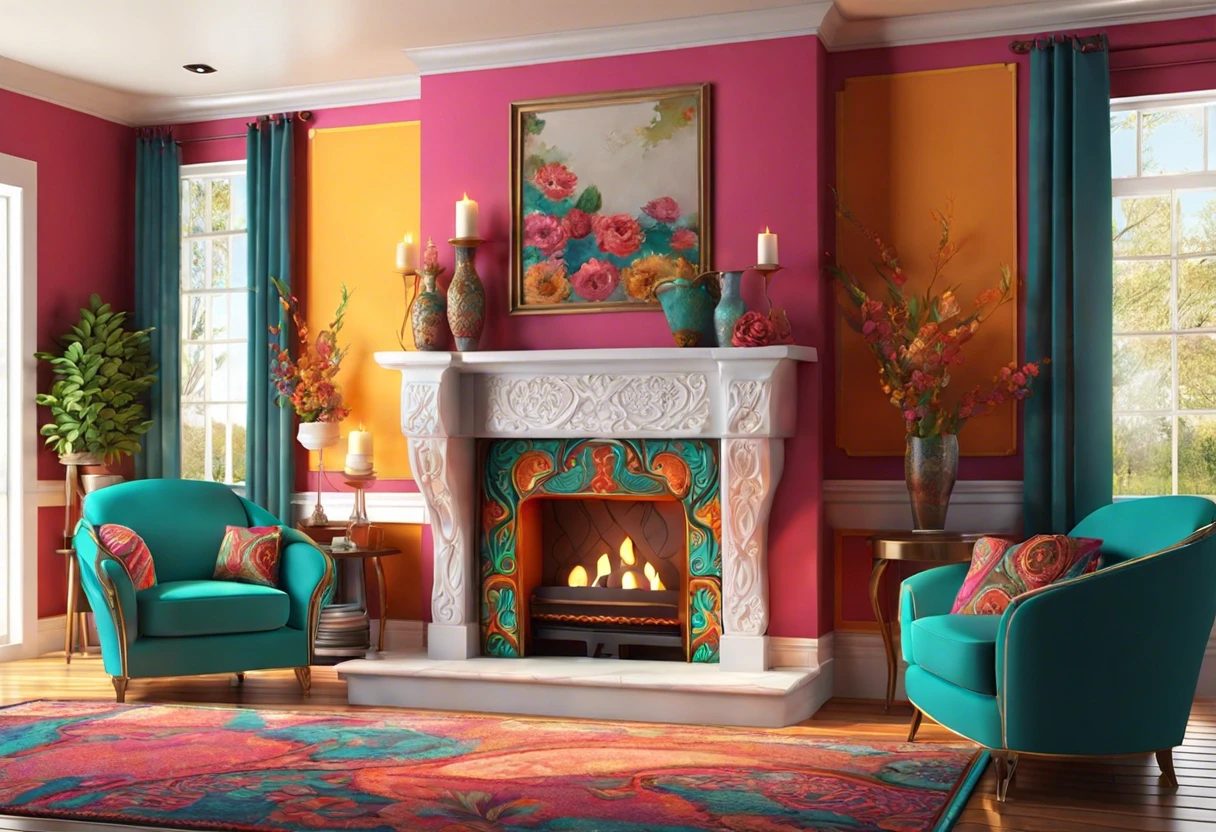
Steps to Successfully Paint the Inside Of Your Fireplace
Now, let’s cover how to make your fireplace shine with a new coat of paint. Here are the steps to paint your fireplace interior!
-
Clean the Fireplace Interior Thoroughly
Start by removing all debris and soot. Scrub the inside with a wire brush or putty knife to ensure a clean surface, as residues can prevent paint adhesion.
After removing the heavy debris, wash the interior with a mixture of vinegar and water to eliminate any lingering grime. This creates an ideal surface for a successful paint job.
-
Apply Primer if Necessary
Depending on your fireplace’s material, you might need primer for better paint adhesion. For brick, use a high-temperature primer that resists heat up to 204°C (400°F).
Let it dry for at least 24 hours or according to the package instructions. Skipping this step can lead to peeling paint later.
-
Choose the Right Heat-resistant Paint
Select specialized heat-resistant paint designed for high-temperature environments. Look for paints rated at 260°C (500°F) or higher to avoid scorching or discoloration.
Consider a matte or satin finish, which holds up better in high heat. Avoid gloss, as it doesn’t handle heat well and can peel.
-
Paint the Interior Of the Fireplace
Using a paintbrush or small roller, apply the paint evenly inside the fireplace. Start from the top and work your way down in thin, smooth layers. A second coat may be needed once the first is dry.
Each layer takes about 2 to 8 hours to cure, depending on humidity and temperature. Be patient and give each section ample time to set—it pays off!
-
Allow Proper Drying Time
Once painted, let the fireplace cure for at least 48 hours before use. Proper drying ensures the finish adheres correctly and can withstand high temperatures.
Rushing this process could lead to smoke damage or an uneven appearance, so relax and let it dry thoroughly.
You should now have a good understanding of how to prepare, paint, and finish your fireplace’s interior. In the next part, we’ll discuss color choices for your painted fireplace.
Recommended Color Palette for a Painted Fireplace Interior
I suggest the ‘Cozy Neutrals’ theme, featuring warm tones that create a welcoming vibe.
| Color Box | Hex Code | Color Name |
|---|---|---|
| #D9C5B4 | Sandy Beige | |
| #A65E2E | Rust Orange | |
| #8E4B2E | Burnt Umber | |
| #F9F9F9 | Soft White |
That covers the suggested color schemes for a painted fireplace interior. Let’s now take a look at suitable paint types for your fireplace.
Types Of Suitable Paint for the Inside Of Your Fireplace
Let’s discuss the types of paint you can use: high-temperature paint, heat-resistant paint, chalk paint, and masonry paint.
-
High-temperature Paint
This paint can withstand temperatures up to 1200°F (649°C). It’s ideal for areas exposed directly to flames. Make sure to choose a paint specifically labeled for fireplaces.
-
Heat-resistant Paint
Heat-resistant paint tolerates temperatures around 500°F (260°C). It’s great for areas not directly in the fire, protecting the integrity of your fireplace while adding color.
-
Chalk Paint
This trendy paint offers a matte finish and is easy to apply. Just be cautious—while it’s great for decorative purposes, its durability is crucial when considering if you can paint the inside of your fireplace.
-
Masonry Paint
Ideal for brick and stone, masonry paint can withstand heat but should mainly be used as a decorative finish in non-flame areas of the fireplace. Ensure proper preparation for optimal adhesion! If you’re curious about alternative paint applications, you might want to explore creative paint usage techniques.
Over time, I’ve found that high-temperature paint is my favorite. It gives me peace of mind knowing it won’t peel or discolor, keeping everything fresh as I enjoy cozy evenings.
So far we covered various suitable paints for your fireplace’s interior. Let’s look at the factors influencing your painting decision next.

Factors Affecting the Decision to Paint Your Fireplace Interior
What factors influence your choice to paint your fireplace’s interior?
-
Type of Material: Different materials, like brick or tile, require specific paint types.
-
Heat Resistance: The interior paint must resist high temperatures without damage.
-
Ventilation: Proper airflow prevents paint fumes from accumulating, ensuring safety.
-
Functionality: If used for fires, some paints may not be suitable or could pose risks.
Benefits of Painting the Inside of Your Fireplace
Wondering why you should paint the inside of your fireplace? There are some exciting benefits!
- Enhanced Aesthetics: A fresh coat of paint can refresh your fireplace’s look, turning it into a stunning focal point in your room.
- Improved Cleanliness: Painting can make it easier to clean soot and dust, as smooth surfaces gather less grime.
- Increased Home Value: An appealing fireplace can improve your home’s overall value and appeal to potential buyers.
- Creative Expression: Painting allows you to express your personal style, adding unique colors or patterns that reflect your taste.
Potential Drawbacks of Painting the Inside of Your Fireplace
While painting can be fabulous, it’s essential to consider some potential downsides.
- Heat Damage: If not painted properly with heat-resistant material, the paint can peel or crack, leading to safety hazards.
- Maintenance Efforts: Painted surfaces may require more frequent cleaning to maintain their appearance, especially after use.
- Bubble Formation: Improper application can cause condensation or air bubbles under the paint as heat rises, affecting the aesthetic.
- Color Fading: Some colors might fade faster, especially if the fireplace sees high usage.
Common Issues When Painting the Inside Of Your Fireplace
My friend asked, “Can you paint the inside of your fireplace?” She was concerned about heat-resistant paint. It’s crucial—normal paint can’t withstand the heat!
Use high-temperature, heat-resistant paint, like BBQ paint, rated up to 1200°F (649°C). Clean thoroughly and let it dry for at least 24 hours before using the fireplace again.
Alternatives to Painting Your Fireplace Interior
If painting isn’t for you, there are other fantastic options to consider for sprucing up your fireplace’s interior!
-
Stenciling Designs
Instead of painting, consider using high-heat stencils. With the right materials, you can create unique patterns that stand out without the risk of paint damage.
-
Fireplace Liners
You can install fireplace liners made of stainless steel or decorative stone. These materials not only enhance aesthetics but also protect the fireplace walls.
-
Brick and Stone Restoration
If you have a classic brick or stone fireplace, restoring its original beauty through cleaning and sealing keeps it looking fresh and vibrant.
-
Decorative Screens
Using decorative fireplace screens can add charm while safeguarding against sparks. Choose screens that match your room’s theme for stylish protection!
Maintenance Needs After Painting the Inside of Your Fireplace
Once you’ve painted, keeping it looking good is key! Here are some maintenance tips to consider:
| Maintenance Task | Frequency | Details |
|---|---|---|
| Dust Removal | Weekly | Gently wipe down with a soft cloth to keep the surface clear of dust. |
| Deep Clean | Monthly | Use mild soap and warm water to wash down surfaces without harsh chemicals. |
| Inspect for Damage | Seasonally | Check for peeling, cracks, or discoloration to address before they worsen. |
| Reapply Sealant | Every 2-3 years | Consider sealing with clear heat-resistant sprays to protect painted surfaces. |
Finishing Touches After Painting Your Fireplace
After painting the inside of your fireplace, wait at least 72 hours for the paint to fully cure (Harden) before using it. Maintain an even temperature during this time to avoid cracking.
Inspect the chimney flue for proper sealing and check for any cracks. Use a product like Rutland Fireplace Mortar to fill small gaps, ensuring temperatures don’t exceed 1000°F (538°C).
Advanced tip: For experienced painters, consider applying a high-heat reflective coating like Rust-Oleum High Heat, rated for 1200°F (649°C). This improves safety and enhances your fireplace’s appearance. If you’re looking to expand your painting skills beyond traditional surfaces, you might want to explore creative painting techniques for shoes.
Frequently Asked Questions About Painting the Inside Of Your Fireplace
Can I Use Regular Paint on My Fireplace?
Yes, you cannot use regular paint on your fireplace. Regular paint can’t withstand high temperatures, leading to peeling or hazardous fumes. Instead, choose high-heat paint designed for maximum temperatures of at least 204°C (400°F) for safety and durability.
How Long Does Painted Fireplace Interior Last?
Painted fireplace interiors typically last 5 to 10 years. Factors include paint type, usage frequency, and environmental conditions. High-heat paint with proper application can extend lifespan in many homes. When painting near heat sources like radiators, you’ll want to ensure precise technique and master painting behind tricky surfaces.
Will Painting My Fireplace Affect Its Functionality?
No, painting your fireplace won’t affect its functionality if done correctly. Just remember to use appropriate materials. Improper painting could lead to overheating, resulting in poor performance or damage over time. If you’re unsure about paint compatibility, check out specific paint application techniques to ensure a safe and effective finish.
What is the Best Way to Clean a Painted Fireplace?
The best way to clean a painted fireplace is with mild soap and warm water. Avoid harsh chemicals as they can damage your paint. Light scrubbing with a soft cloth or sponge usually does the trick without harming the finish. If you’re considering refreshing your fireplace’s look, you might want to explore painting without extensive sanding.
Is There a Specific Season to Paint My Fireplace?
No, there isn’t a specific season necessary to paint your fireplace. Just make sure to choose a dry day with good ventilation year-round. However, spring or fall are often ideal due to milder temperatures and humidity levels. If you’re concerned about potential hazards like lead-based paint risks during your renovation, professional guidance can help ensure a safe painting process.
How Do I Prepare My Fireplace for Painting?
To prepare your fireplace for painting, clean surfaces thoroughly, removing soot, dust, or old paint. Ensure the area is dry and in good condition for proper adhesion of paint.
Can I Paint My Fireplace Directly Over Old Paint?
No, you cannot paint your fireplace directly over old paint. Stripping or sanding off old paint is essential for the new layer to adhere properly and achieve a durable finish.
Also See: Can Asphalt Roof Shingles Be Painted? Here’s How
Conclusion
I’m glad we could cover this together. We discussed the essentials: what a fireplace is, crucial prep work, painting steps, a color palette, suitable paints, factors influencing your decision, common issues, final touches, and creative DIY ideas.
In summary, you can paint the inside of your fireplace, but ensure you use heat-resistant paints and prepare adequately to avoid hazards.
For further information and tips, visit Paint Answers.
Additional Resources
- Betti, C., & Sale, T. (2012). Drawing: A Contemporary Approach (6th ed.). Belmont, CA: Cengage Learning.
- Painting Brick Fireplace (indoor) | DIY Home Improvement Forum
- r/HomeImprovement on Reddit: What are the cons of painting the inside of a real fireplace?
- Paint Inside of Your Fireplace – South House Designs

